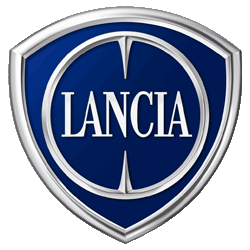Lancia - Thema - Workshop Manual - 2014 - 2014
Get your hands on the complete Lancia factory workshop software
Download nowGet your hands on the Complete Lancia Factory Workshop Software
Download nowGet notified when we add a new LanciaThema Manual
We cover 60 Lancia vehicles, were you looking for one of these?

Modifying & Tuning Fiat Lancia Twincam Engines PDF Guy Croft

Lancia Kappa K Service Repair Workshop Manual PDF

Lancia Delta Integrale 4WD Workshop Manual PDF

Lancia - Delta - Parts Catalogue - 2008 - 2008

Lancia - Beta - Workshop Manual - 1979 - 1979

Lancia - Delta - Workshop Manual - 2008 - 2008

Lancia - Ypsilon - Workshop Manual - 2011 - 2011

Lancia - Fulvia - Workshop Manual - 1976 - 1976

Grand Voyager L4-153 2.5L SOHC (1989)

Lancia - Fulvia - Owners Manual - 1969 - 1969

Lancia - Voyager - Workshop Manual - 2012 - 2012

Lancia - Musa - Workshop Manual - 2010 - 2010

Lancia - Dedra - Parts Catalogue - 1989 - 1999

Lancia - Ypsilon - Owners Manual - 2003 - 2003

Lancia - Fulvia - Miscellaneous Documents - 2015 - 2015

Lancia - Voyager - Owners Manual - 2002 - 2007 (German)

Lancia - Thesis - Owners Manual - 2000 - 2000 (Italian)

Lancia - Ypsilon - Owners Manual - 2012 - 2012

Lancia - Lybra - Owners Manual - 2013 - 2013 (German)

Lancia - Flaminia - Parts Catalogue - 1960 - 1960 (Italian)

Lancia - Musa - Wiring Diagram - 2006 - 2006

Lancia - Delta - Owners Manual - 2011 - 2011 (Italian)

Lancia - Lybra - Wiring Diagram - 2001 - 2001

Lancia - Phedra - Wiring Diagram - 2002 - 2002

Lancia - Fulvia - Workshop Manual - 1995 - 1995 (German) (2)

Lancia - Ypsilon - Owners Manual - 2000 - 2000 (Italian)

Lancia - Ypsilon - Owners Manual - 2010 - 2010 (Italian)

Lancia - Fulvia - Workshop Manual - 1972 - 1972 (German)

Lancia - Delta - Owners Manual - 2011 - 2011 (French)

Lancia - MUSA - Owners Manual - 2003 - 2003 (Dutch)

Lancia - Lybra - Parts Catalogue - 1999 - 2005 (2)

Lancia - Voyager - Owners Manual - 2002 - 2007 (Spanish)

Lancia - Phedra - Owners Manual - 2003 - 2003 (Czech)

Lancia - Musa - Owners Manual - 2011 - 2011 (Italian)

Lancia - Flaminia - Wiring Diagram - 1959 - 1986

Lancia - Delta - Owners Manual - 2000 - 2000 (Dutch)

Lancia - Delta - Miscellaneous Documents - 1993 - 1995.PDF

Lancia - Fulvia - Sales Brochure - 1973 - 1973

Lancia - Delta - Workshop Manual - 2006 - 2006

Lancia - Flavia - Parts Catalogue - 2012 - 2012 (3)

Modifying & Tuning Fiat Lancia Twincam Engines PDF Guy Croft_5d8a7f8b0e89c3a49732300

Lancia - Delta - Owners Manual - 2010 - 2010 (German)

Lancia - Lybra - Workshop Manual - 2001 - 2005

Lancia - Stratos - Sales Brochure - 1976 - 1976

Lancia - Delta - Sales Brochure - 2014 - 2014

Lancia - Musa - Miscellaneous Documents - 2005 - 2005

Lancia - Thesis - Owners Manual - 2003 - 2003

Lancia - Delta - Owners Manual - 1995 - 1995

1997 Lancia Y Service Manual PDF

Lancia - Voyager - Owners Manual - 2010 - 2010 (Italian)

Lancia - Prisma - Workshop Manual - 1995 - 1995 (Italian)

Lancia - Lybra - Owners Manual - 2013 - 2013 (Italian)

Lancia - Kappa - Workshop Manual - 2014 - 2014

Lancia - Fulvia - Miscellaneous Documents - 1965 - 1976

Lancia - Musa - Sales Brochure - 2012 - 2012 (Italian)

Lancia - Delta - Sales Brochure - 2009 - 2009 (Dutch)

Lancia - Fulvia - Miscellaneous Documents - 2009 - 2009

Lancia - Gamma - Sales Brochure - 1977 - 1977 (German)

Toys & Accessories - Mega - Neo Shifters - DELTA%3A%3ATEK, 6303

Lancia - Fulvia - Sales Brochure - 2005 - 2005

Modifying & Tuning Fiat Lancia Twincam Engines PDF Guy Croft

Lancia Kappa K Service Repair Workshop Manual PDF

Lancia Delta Integrale 4WD Workshop Manual PDF

Lancia - Delta - Parts Catalogue - 2008 - 2008

Lancia - Beta - Workshop Manual - 1979 - 1979

Lancia - Delta - Workshop Manual - 2008 - 2008

Lancia - Ypsilon - Workshop Manual - 2011 - 2011

Lancia - Fulvia - Workshop Manual - 1976 - 1976

Grand Voyager L4-153 2.5L SOHC (1989)








































































































































































































































